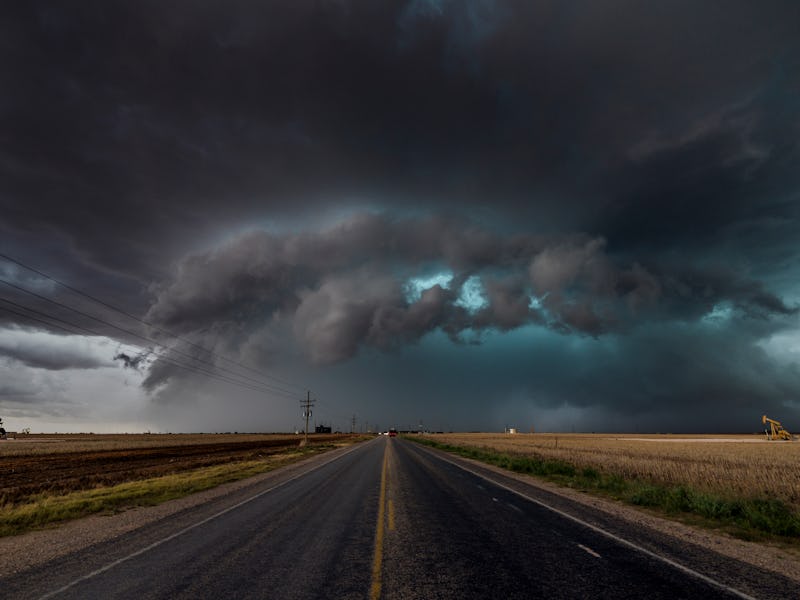Fiber-optic cables and lasers can predict invisible thunderquakes
Next up: earthquakes.

A new study proves the concept that fiber-optic cables that bring us our internet and phone services could one day help us detect earthquakes.
Researchers at Penn State published Tuesday in the Journal of Geophysical Research: Atmospheres their research detailing a system that could detect when an earthquake is coming. But right now, they’re only dealing in something much, much smaller: so-called “thunderquakes.”
Researchers from Penn State use something called a distributed acoustic sensing (DAS) array to send a laser down one of the glass fibers in a cable. This turns the fiber-optic cable into a sensor that can detect movement in the ground that might originate from the Earth or from what’s happening above ground. This was originally meant to detect thunder, which pushes acoustic pressure to the ground, but it could also be useful for detecting Earthquakes.
The West Coast of the United States has a system called ShakeAlert that the United States Geological Survey (USGS) unveiled last year that can warn residents when an earthquake is about to happen.
Unfortunately, that system doesn’t have as many seismic monitoring stations as it should, but what if we could utilize infrastructure we’ve already built to increase the coverage?
See also: How Supercomputers Are Making Hurricane Forecasting Much Easier
Study authors David Stensrud, head of the Department of Meteorology and Atmospheric Science at Penn State, and Tieyuan Zhu, assistant professor of geophysics at Penn State, explain in the study that detecting the strength of thunder in one area can aid in predicting where a storm is heading go next.
“Severe weather has strong interactions with the ground, but we haven’t had the capability to study the coupling between the atmosphere and the solid Earth,” Zhu said in a statement released with the research. “With this new technology, we can utilize existing fiber-optics networks to clearly see how thunderstorm energy passed through campus.”
The fiber-optic cables are so sensitive that they are able to tell if someone is walking above them, so the immense pressure created by a thunderstorm wouldn’t be hard to pick up on.
“The ability to use fiber-optic cables to detect the source of thunder provides yet another way to track thunderstorms and help with public safety and emergency response, especially in urban areas,” Stensrud said. “Every new data source helps to improve our storm-tracking ability.”
The DAS array takes measurements every six-and-a-half feet, and there is a tremendous amount of fiber-optic cable underground in America, so you can imagine how much data we’d be able to collect to detect storms and earthquakes if system like the one described was set into place.
Using thunderstorm data to predict earthquakes
We could feed that data into an algorithm and come up with much better methods for predicting where storms are going and warning people about a coming earthquake. The researchers claim this technology could also be useful for monitoring hurricanes and floods.
We already have the fiber optic cable in the ground, so it seems like a pretty good idea to use it for more than one purpose.
Abstract:
We report for the first time on a distributed acoustic sensing (DAS) array using preexisting underground fiber optics beneath the Penn State campus for detecting and characterizing thunder-induced ground motions. During a half‐hour interval from 03:20–03:50 UTC on 15 April 2019 in State College, PA, we identify 18 thunder‐induced seismic events in the DAS array data. The high‐fidelity DAS data show that the thunder‐induced seismics are very broadband, with their peak frequency ranging from 20 to 130 Hz. We use arrival times of the 18 events to estimate the phase velocity of the near surface, the back azimuth, and location of thunder‐seismic sources that are verified with lightning locations from the National Lightning Detection Network.
Furthermore, the dense DAS data enable us to simulate thunder‐seismic wave propagation and full waveform synthetics and further locate the thunder‐seismic source by time‐reversal migration. Interestingly, we found that thunder‐seismic power recorded by DAS is positively correlated with National Lightning Detection Network lightning current power. These findings suggest that fiber‐optic DAS observations may offer a new avenue of studying thunder‐induced seismics, characterizing the near‐surface velocity structure, and probing the thunder‐ground coupling process.